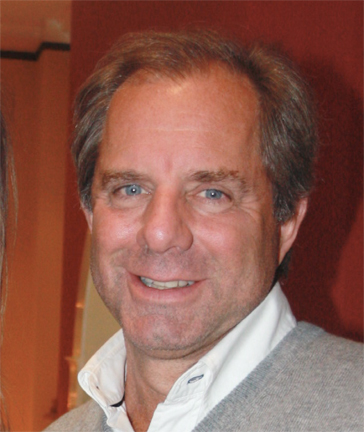Dr. James L. Pindell, 2020 Doris Malkin Curtis Medal

In recognition of his pioneering work and technical leadership in the understanding of the origin and evolution of the Gulf of Mexico and Caribbean regions.
James Lawrence (“Jim”) Pindell was born on October 9, 1957 in Syracuse, NY, and was gifted from birth with an eidetic memory and a natural curiosity about the world. This curiosity initially led him to Colgate University, where he earned a BA in geology in 1979. Jim earned his MS in geology in 1981 at SUNY Albany under the guidance of John Dewey and Kevin Burke, and this partnership with Dewey led to the publication of Jim’s landmark MS synthesis, Permo-Triassic reconstruction of Western Pangea and the evolution of the Gulf of Mexico/Caribbean region in 1982. With this promising start, Jim entered the oil industry with Pennzoil in Houston but left after a year to pursue his PhD in geology under Dewey and (external advisor) Walter Pittman at the University of Durham (England). It was from this work that Jim published what is now considered to be his groundbreaking paper on the origin of the Gulf of Mexico, Alleghanian reconstruction and the subsequent evolution of the Gulf of Mexico, Bahamas, and Proto-Caribbean Sea in 1985. After brief stints at Lamont-Doherty and the University of Puerto Rico (Mayagüez), Jim settled in at Dartmouth College for the longest stay of his academic career (1987-1997). During his time at Dartmouth, Jim built on his initial work with 28 major publications on the geology and tectonic evolution of the Gulf of Mexico and Caribbean regions. His 1990 Decade of North American Geology paper with Steve Barrett, Geologic Evolution of the Caribbean Region: a Plate-Tectonic Perspective, is still considered to be the starting point for all those working on tectonic problems in the region.
Jim’s pursuit of geological problems pulled him into the field in many countries, including Venezuela, Colombia, Trinidad and Tobago, Barbados, and Mexico, and this work obviously made him think more deeply about the interplay of tectonics and sedimentation on hydrocarbon accumulations in Mexico and the Caribbean borderlands. In 1986, Jim started Tectonic Analysis, Inc. one of the first and most successful industrial associates programs in E&P research. Along with coworkers and former students Sam Algar and Johan Erikson and synergistic relationships with Roger Higgs and Tomás Villamil, Jim produced numerous voluminous industry reports and publications and made many key advances in our understanding of the geology of northern South America. Upon leaving Dartmouth, Jim worked full-time through Tectonic Analysis, Ltd. (TAL) with Lorcan Kennan to combine and synthesize TAL products with industry data in a universal digital format, especially improving our understanding of the geology of Trinidad and Tobago. In 2009, Jim and Lorcan published Tectonic evolution of the Gulf of Mexico, Caribbean and northern South America in the mantle reference frame: an update, a major leap forward in our understanding of circum-Caribbean geology and evolution. While Jim maintained his academic ties as an adjunct professor with the University of Cardiff and Rice University, the industry-related portion of TAL continued to grow. In 2011, Jim began a fruitful working relationship with ION-GXT that helped return his focus to the Gulf of Mexico, but also allowed him to branch out into new project areas like Brazil, Suriname, and Mexico, from which Jim co-taught numerous ION workshops for industry around the world with colleagues Rod Graham and Brian Horn. Since 2017, Jim and Rod along with Gary Gray have conducted field studies together in Mexico, the three of them teaming to author four papers in the upcoming Geological Society of London Special Publication 504. Jim’s expanded focus on Mexico has also allowed him to collaborate with key coworkers Diego Villagómez, Bodo Weber and Roberto Molina-Garza.
Since the beginning of his career, Jim’s work has shaped how we think and what we know about the post-Pangea world of the Gulf of Mexico, the Caribbean, and South America. A list of his major contributions and publications (over 100 papers, plus countless abstracts and presentations) would be too long to include here. Some of his most important contributions include:
- Recognition of the importance of the Tuxpan-Chiapas Transform margin, now known as the East Mexico or Western Gulf Transform which facilitated the counterclockwise rotation of the Yucatán Block out of the Gulf of Mexico.
- Understanding the amount and extent of stretching/extension of the West Florida crust into the Great Bahamas Bank.
- Strontium dating of salt in the principal Gulf of Mexico salt basin (not just the interior salt basins) as Bajocian, and not Callovian.
- Proponent and champion of the Pacific origin of the Caribbean Plate.
- Clearly documenting the Maastrichtian to Present eastward migration of the Caribbean foredeep along northern South America.
- Balancing 1100 km of Cayman Trough offset across the multiple fault strands of Hispaniola (and not just the Oriente fault zone).
- The realization of the transition from transpression to transtension in Eastern Venezuela and Trinidad at 10 Ma.
- Recognized the Chiapanecan orogeny in southern Mexico was not caused by the passage of the Chortis Block, but rather by the onset of subduction beneath Chiapas in the wake of Chortis.
For my part, I’ve had the pleasure to know Jim personally and professionally for the past 36 years, during which Jim and I have worked together on Florida, Trinidad, Colombia, Venezuela and the opening of the Atlantic. Besides his many achievements and prodigious intellect, I know Jim as a family man and a good friend. Never having been accused of being timid, Jim will fiercely defend his ideas and his friends, and cares deeply about the science of geology. I am therefore honored to have been asked to write the citation for this award, which is so richly deserved.
Bob Erlich
Executive Director, Cayo Energy LP
